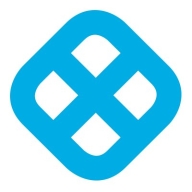

Harness and VMware Tanzu Platform compete in software delivery and management. Harness leads in pricing and ease of use, while VMware Tanzu is noted for its features, offering greater value at a higher cost.
Features: Harness focuses on continuous integration/continuous delivery, efficient pipeline management, and cost management. VMware Tanzu emphasizes Kubernetes integration, cloud-native application support, and scalability.
Ease of Deployment and Customer Service: Harness provides a simple deployment and strong customer service for quick onboarding. VMware Tanzu involves a complex deployment due to its feature set but includes detailed documentation and support for enterprise needs.
Pricing and ROI: Harness offers a cost-effective setup appealing to budget-conscious companies with a quick ROI. VMware Tanzu demands higher costs but ensures a good ROI over time with its extensive capabilities, making it a valuable choice for large enterprises.


Harness offers a comprehensive toolset for automating deployment processes and enhancing software update efficiency. It's lauded for its CI/CD capabilities, feature flagging, and real-time deployment monitoring. Key features include an intuitive UI, secret management, and robust rollback functionalities, all contributing to improved productivity and reduced errors in DevOps environments.
VMware Tanzu Platform is designed for cloud-native development and management of Kubernetes, CI/CD processes, microservices, and containerized workloads. It supports deployments both on cloud and on-premises, providing centralized management via Mission Control.
VMware Tanzu Platform offers seamless integration with vSphere, ESX, and vSAN, supporting centralized cluster management and lifecycle management. The platform provides a GUI for monitoring CI/CD pipelines and network policies, enhancing multi-tenancy and Day 2 operations. Users can easily manage Kubernetes clusters, monitor applications, and integrate with tools such as GitHub, GitLab, Cloud Foundry, and Azure. It ensures compliance and security for service providers, financial institutions, and businesses.
What are the key features of VMware Tanzu Platform?Industries such as financial institutions, service providers, and businesses requiring rigorous compliance and security deploy VMware Tanzu Platform. These entities benefit from centralized management, streamlined DevOps processes, and integrated tools, enhancing their capabilities in cloud-native developments and containerized workloads.
We monitor all Build Automation reviews to prevent fraudulent reviews and keep review quality high. We do not post reviews by company employees or direct competitors. We validate each review for authenticity via cross-reference with LinkedIn, and personal follow-up with the reviewer when necessary.